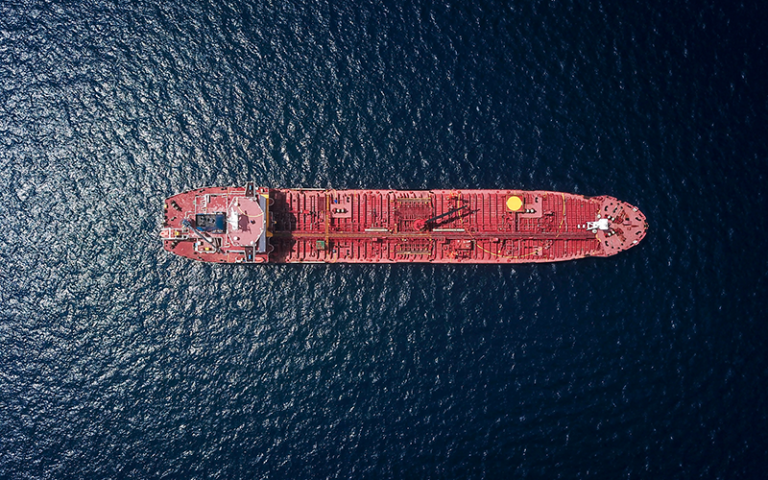Clydebank Declaration signatories have potential to drive shipping sector past tipping point
17 November 2022
Analysis by UCL researchers shows Japan, USA and UK are amongst the signatories that have the highest potential, with ferries, container ships, and bulk carriers identified as the segments with the biggest Green Corridor potential within the Clydebank fleet.

Data on first mover shipping routes is being made available for all to use on the launch of the Green Corridors Hub during COP27 in Danish “State of Green” Pavilion by Zero-Emission Shipping Mission as part of the Mission Innovation Mission Innovation (MI), a global initiative of 23 countries and the European Commission (on behalf of the European Union), as well as an accompanying Insight Brief providing case studies on how it may be used to explore Corridor opportunities.
Almost a year since the launch of the Clydebank Declaration for Green Shipping Corridors at COP26, 24 states have signalled their ambition to support Green Corridors – routes where zero-emission shipping solutions are demonstrated and supported. Moving from a concept, a series of high-profile industry-led initiatives are also springing up to match.
For many companies and governments, however, it is hard to know where to start – which routes in their country have good potential to become Green Corridors and justify further investigation? For this reason, data on first mover shipping routes is being made available for all to download and use, as well as an accompanying Insight Brief providing case studies on how it may be used to explore Corridor opportunities.
Camilo Velandia-Perico, Consultant at UMAS and lead author, said “With the Green Corridor toolkit we want to offer governments and other stakeholders a way to navigate the shipping energy system to find, quantify and pre-assess those ‘unknown’ opportunities.”
This data was first produced for last year’s Getting to Zero Coalition Strategy for the Transition to Zero-Emission Shipping, which showed that roughly 10% of shipping’s energy demand is located on routes with favourable conditions for first movement, i.e. for the establishment of Green Corridors. The brief examines the data for the Clydebank Declaration signatories as a group and three case study routes to illustrate how stakeholders might identify their Green Corridor opportunity.
The analysis provides a series of important insights at the level of the Clydebank group as a whole:
- Scale: There is some 16 million tons of conventional fuel use in Clydebank signatory countries that would be well-placed for early replacement with scalable zero-emission fuel (SZEF) alternatives, including green hydrogen, ammonia, and methanol. This figure amounts to 6.7% of global shipping fuel consumption, meaning that the Clydebank group has more than enough first mover potential to collectively drive the sector past its tipping point.
- Location: While the data demonstrates good potential for Green Corridors across all regions, Japan is identified as the country with the single largest Corridor potential among signatories, with almost a third of the total fuel replacement potential for the Clydebank group from around 1300 vessels. The United States, United Kingdom, Australia and others are not far behind Japan and can also serve as major drivers of the shipping’s early decarbonization.
- Segments: Ferries, container ships, and bulk carriers are identified as the individual segments with the biggest Green Corridor potential within the Clydebank fleet, with 18.4%, 7.4% and 6.2% of Corridor potential respectively, though there is a broad range of segments with excellent early adoption potential within the Clydebank fleet. Promoting action across a wide variety of ship types should allow a range of business models to develop that help underpin the transition beyond 2030.
To showcase more specific opportunities, the brief also includes three case studies across three different Clydebank geographies and Corridor types – domestic shipping around Oita/Osaka, Japan; the transpacific container route between Osaka, Japan, and Long Beach, USA; and the ferry route between Immingham, UK, and Hoek van Holland in the Netherlands. Each case study showcases a different way a data-driven approach can support the selection and design of potential Corridor projects to reduce cost/risk and maximize success.
The analysis in the brief reinforces why Green Corridors are a key and credible mechanism for starting shipping’s transition to SZEF now, what scale of project might suit different locations, and how the opportunity they present can be realized across a large number of different countries, routes and ship types.
Over the coming year, this data-based approach will be further developed in collaboration with these stakeholders, with a view to making even more detailed and valuable information available to support interested companies and governments in their consideration, prioritisation, and implementation of potential Green Corridors. The aim is to create further collaboration on and evidence-driven investment into Green Corridors, accelerating shipping’s transition to new energy use and supply chains.
 Close
Close

